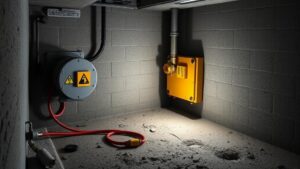Mastering Sub-Surface Imaging for Identifying Relics in Archaeological Layers
Mastering Sub-Surface Imaging for Identifying Relics in Archaeological Layers
The identification and excavation of archaeological relics have long relied on traditional methods such as excavation and surveying. But, advancements in technology have revolutionized this field, particularly through sub-surface imaging techniques. This article explores the various methods of sub-surface imaging, their applications in archaeology, and the implications for future research and excavation strategies.
Understanding Sub-Surface Imaging Techniques
Sub-surface imaging refers to a range of non-invasive methods used to visualize and interpret features buried beneath the ground. e techniques are indispensable in archaeology because they allow researchers to locate and study relics without the need for extensive excavation. The most prominent techniques include Ground Penetrating Radar (GPR), electrical resistivity tomography, magnetic susceptibility surveys, and seismic reflection.
- Ground Penetrating Radar (GPR): GPR utilizes radar pulses to image the subsurface. It is particularly effective in distinguishing between different soil layers and materials, making it ideal for locating buried artifacts and features.
- Electrical Resistivity Tomography (ERT): ERT measures the electrical resistance of the ground, providing information on soil moisture, density, and composition, which can indicate the presence of relics.
- Magnetometry: This technique measures the magnetic fields in the soil. Archaeological sites often exhibit anomalies in magnetic fields due to the presence of metal artifacts or the decay of organic matter.
- Seismic Reflection: Seismic methods, although less common in archaeology, are useful for imaging deep burial contexts and large structures.
Applications in Archaeology
The application of sub-surface imaging techniques leads to several practical advantages in archaeological research. With improved accuracy and efficiency, archaeologists can gather critical information without disturbing the site, thus preserving valuable cultural heritage.
For example, at the site of Puyallup, Washington, GPR was used to locate medieval structures buried beneath layers of soil. The data obtained provided evidence of an extensive settlement, allowing researchers to identify areas of interest for more focused excavation. Also, projects at the Roman fort of Vindolanda in England employed electrical resistivity surveys, which revealed structural remains not visible through traditional excavation methods.
Case Studies Overview
There are numerous successful case studies illustrating the effectiveness of sub-surface imaging in archaeology. A notable example is the use of GPR in the exploration of the ancient site of Pompeii, where imaging techniques helped researchers pinpoint areas of interest without additional damage to the site.
Another compelling case study involved the use of magnetic surveys in measuring historic battlefields, such as the Battle of Gettysburg. The magnetic susceptibility of the soil offered crucial insights into the battlefield layout and potential locations of artifacts, drastically reducing the amount of invasive excavation required.
Limitations and Challenges
Despite the advancements that sub-surface imaging techniques bring to archaeology, there are inherent limitations that researchers must acknowledge. For example, GPR is less effective in highly conductive soils, such as clay, where the radar signals can diminish rapidly. Plus, the interpretation of data can be complex, necessitating skilled professionals familiar with both the technology and archaeological contexts.
Also, while sub-surface imaging greatly aids in preserving archaeological sites, it does not eliminate the need for careful excavation and assessment. Relics and artifacts may still require physical retrieval for conclusive studies to unravel their historical significance.
Future Directions and Technologies
The future of sub-surface imaging in archaeology looks promising, with new technologies continually emerging. Advancements in drone technology equipped with multispectral imaging capabilities and artificial intelligence for data analysis present exciting possibilities for significantly scaling up archaeological surveys.
Future research could focus on integrating different imaging techniques to provide complementary data, thus enhancing the overall understanding of sub-surface features. For example, combining GPR with ERT can yield highly detailed images of stratigraphy and facilitate the detection of buried artifacts more effectively.
Conclusion
Mastering sub-surface imaging is essential for modern archaeological practices. By employing these innovative techniques, researchers can uncover and study relics in a minimally invasive manner, preserving the integrity of archaeological sites while maximizing the potential for new discoveries. ongoing evolution of technology promises to further enhance the capacity of archaeologists to explore our past with precision and insight.
Actionable Takeaways
- Incorporate sub-surface imaging techniques early in archaeological project planning to assess site potential.
- Invest in training for staff in the advanced interpretation of imaging data to ensure accuracy.
- Engage interdisciplinary collaboration, combining archaeology with technology fields to leverage new advancements.
- Consider the environmental context of the site to choose the most suitable imaging technique.


